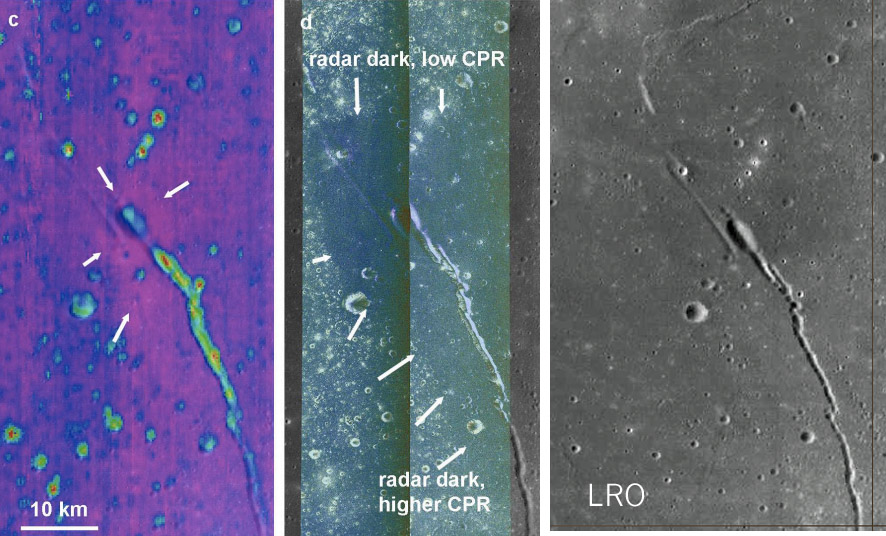February 3, 2014
Keeping Up with Amateurs

center and left images from Carter and colleagues, 2014 and right image from LRO QuickMap
We see the Moon with eyes that are most sensitive to the visible range of the spectrum, and our digital cameras are similar, but extend more towards the near infra-red. Other sensors observe in other wavelengths and see different things than we do. An abstract for the upcoming 45th Lunar and Planetary Science Conference provides an example when looking at the Birt Rille. Start with the LRO image at right, which is similar to telescopic views. The mare surface is cut by the rille, which has an elongated deep vent near the center of the image. The high Sun illumination hides the dome that the vent bisects, but it is visible on appropriate telescopic images.. The purple colored image, from the Diviner instrument on the LRO spacecraft, maps regolith temperature. The purple areas have a temperature of 2 K, and the red areas are 30 K.The green, yellow and red areas are hotter than the mare because their sloping walls (of small craters and the rille) expose small rocks and boulders that hold heat longer than the mare. The white arrows indicate the limits of a pinker purple area - this is a thin layer of pyroclastic ash that is free of rocks and is thus cool. The middle image is made from radar data from the Mini-RF on LRO. CPR is circular polarization ratio, a measurement that highlights the occurrence of rocks in the upper tens of centimeters of regolith. The dark area around the rille, marked by the arrows, maps the limit of the pyroclastics to a greater extent than revealed by the Diviner thermal infra-red imaging. This suggests that the pyroclastics erupted not just from the vent but also from the rille itself - perhaps the small pits along the rille were also vents. It is remarkable that this same boundary seen in the radar is visible in an amateur's low Sun image - take a careful look.
Chuck Wood
Related Links
21st Century Atlas chart 16.
Enjoy browsing through the 1700 or so abstracts for the upcoming LPSC!
Yesterday's LPOD: Highland Rille
Tomorrow's LPOD: Belated Christmas Gift From NASA
COMMENTS?
Register, Log in, and join in the comments.



